Naicheng Guo
Integrating Large Language Models with Graphical Session-Based Recommendation
Feb 26, 2024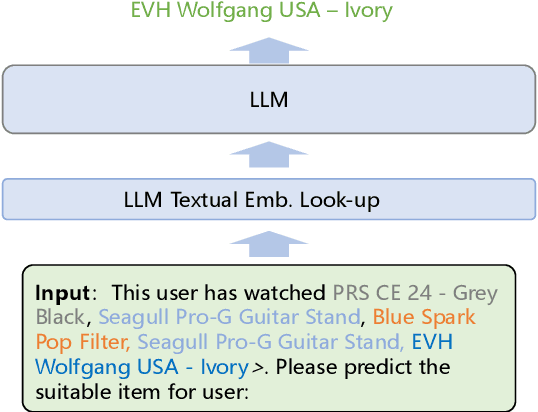


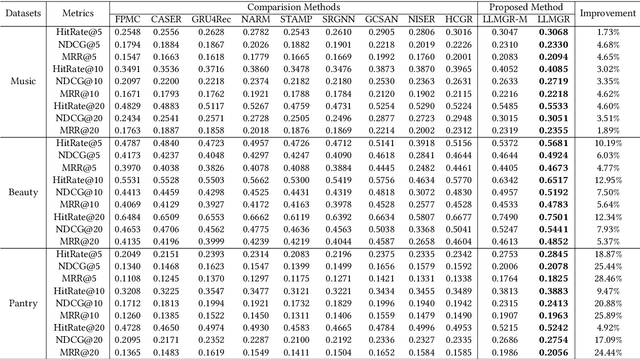
Abstract:With the rapid development of Large Language Models (LLMs), various explorations have arisen to utilize LLMs capability of context understanding on recommender systems. While pioneering strategies have primarily transformed traditional recommendation tasks into challenges of natural language generation, there has been a relative scarcity of exploration in the domain of session-based recommendation (SBR) due to its specificity. SBR has been primarily dominated by Graph Neural Networks, which have achieved many successful outcomes due to their ability to capture both the implicit and explicit relationships between adjacent behaviors. The structural nature of graphs contrasts with the essence of natural language, posing a significant adaptation gap for LLMs. In this paper, we introduce large language models with graphical Session-Based recommendation, named LLMGR, an effective framework that bridges the aforementioned gap by harmoniously integrating LLMs with Graph Neural Networks (GNNs) for SBR tasks. This integration seeks to leverage the complementary strengths of LLMs in natural language understanding and GNNs in relational data processing, leading to a more powerful session-based recommender system that can understand and recommend items within a session. Moreover, to endow the LLM with the capability to empower SBR tasks, we design a series of prompts for both auxiliary and major instruction tuning tasks. These prompts are crafted to assist the LLM in understanding graph-structured data and align textual information with nodes, effectively translating nuanced user interactions into a format that can be understood and utilized by LLM architectures. Extensive experiments on three real-world datasets demonstrate that LLMGR outperforms several competitive baselines, indicating its effectiveness in enhancing SBR tasks and its potential as a research direction for future exploration.
Poincaré Heterogeneous Graph Neural Networks for Sequential Recommendation
May 16, 2022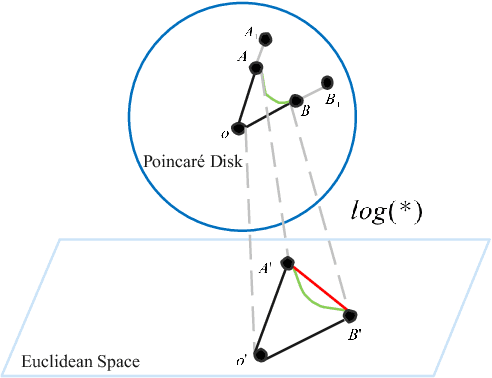
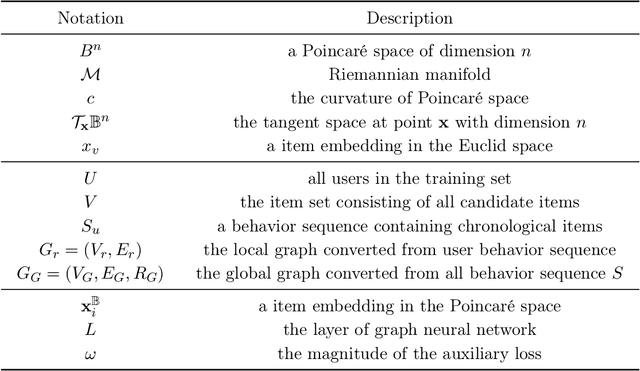
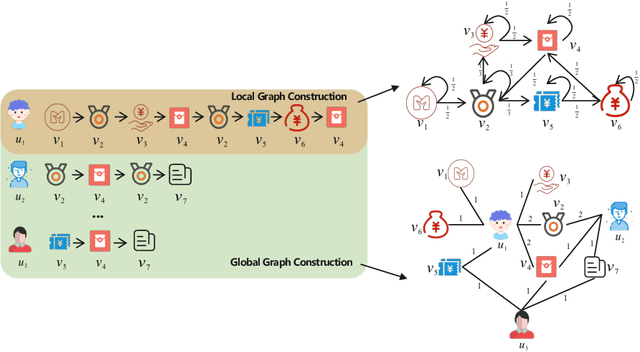

Abstract:Sequential recommendation (SR) learns users' preferences by capturing the sequential patterns from users' behaviors evolution. As discussed in many works, user-item interactions of SR generally present the intrinsic power-law distribution, which can be ascended to hierarchy-like structures. Previous methods usually handle such hierarchical information by making user-item sectionalization empirically under Euclidean space, which may cause distortion of user-item representation in real online scenarios. In this paper, we propose a Poincar\'{e}-based heterogeneous graph neural network named PHGR to model the sequential pattern information as well as hierarchical information contained in the data of SR scenarios simultaneously. Specifically, for the purpose of explicitly capturing the hierarchical information, we first construct a weighted user-item heterogeneous graph by aliening all the user-item interactions to improve the perception domain of each user from a global view. Then the output of the global representation would be used to complement the local directed item-item homogeneous graph convolution. By defining a novel hyperbolic inner product operator, the global and local graph representation learning are directly conducted in Poincar\'{e} ball instead of commonly used projection operation between Poincar\'{e} ball and Euclidean space, which could alleviate the cumulative error issue of general bidirectional translation process. Moreover, for the purpose of explicitly capturing the sequential dependency information, we design two types of temporal attention operations under Poincar\'{e} ball space. Empirical evaluations on datasets from the public and financial industry show that PHGR outperforms several comparison methods.
HCGR: Hyperbolic Contrastive Graph Representation Learning for Session-based Recommendation
Jul 06, 2021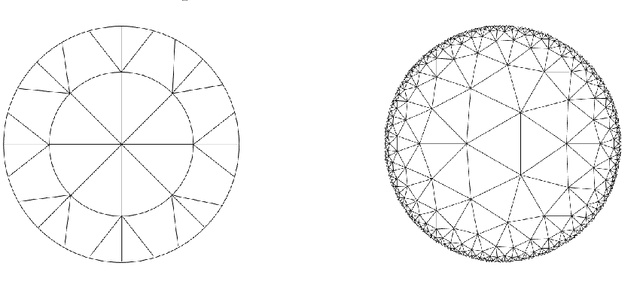
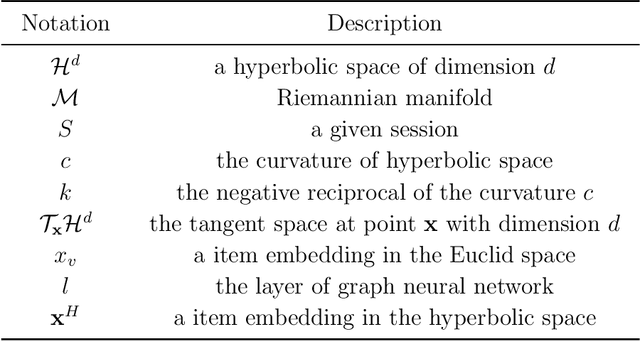


Abstract:Session-based recommendation (SBR) learns users' preferences by capturing the short-term and sequential patterns from the evolution of user behaviors. Among the studies in the SBR field, graph-based approaches are a relatively powerful kind of way, which generally extract item information by message aggregation under Euclidean space. However, such methods can't effectively extract the hierarchical information contained among consecutive items in a session, which is critical to represent users' preferences. In this paper, we present a hyperbolic contrastive graph recommender (HCGR), a principled session-based recommendation framework involving Lorentz hyperbolic space to adequately capture the coherence and hierarchical representations of the items. Within this framework, we design a novel adaptive hyperbolic attention computation to aggregate the graph message of each user's preference in a session-based behavior sequence. In addition, contrastive learning is leveraged to optimize the item representation by considering the geodesic distance between positive and negative samples in hyperbolic space. Extensive experiments on four real-world datasets demonstrate that HCGR consistently outperforms state-of-the-art baselines by 0.43$\%$-28.84$\%$ in terms of $HitRate$, $NDCG$ and $MRR$.
 Add to Chrome
Add to Chrome Add to Firefox
Add to Firefox Add to Edge
Add to Edge